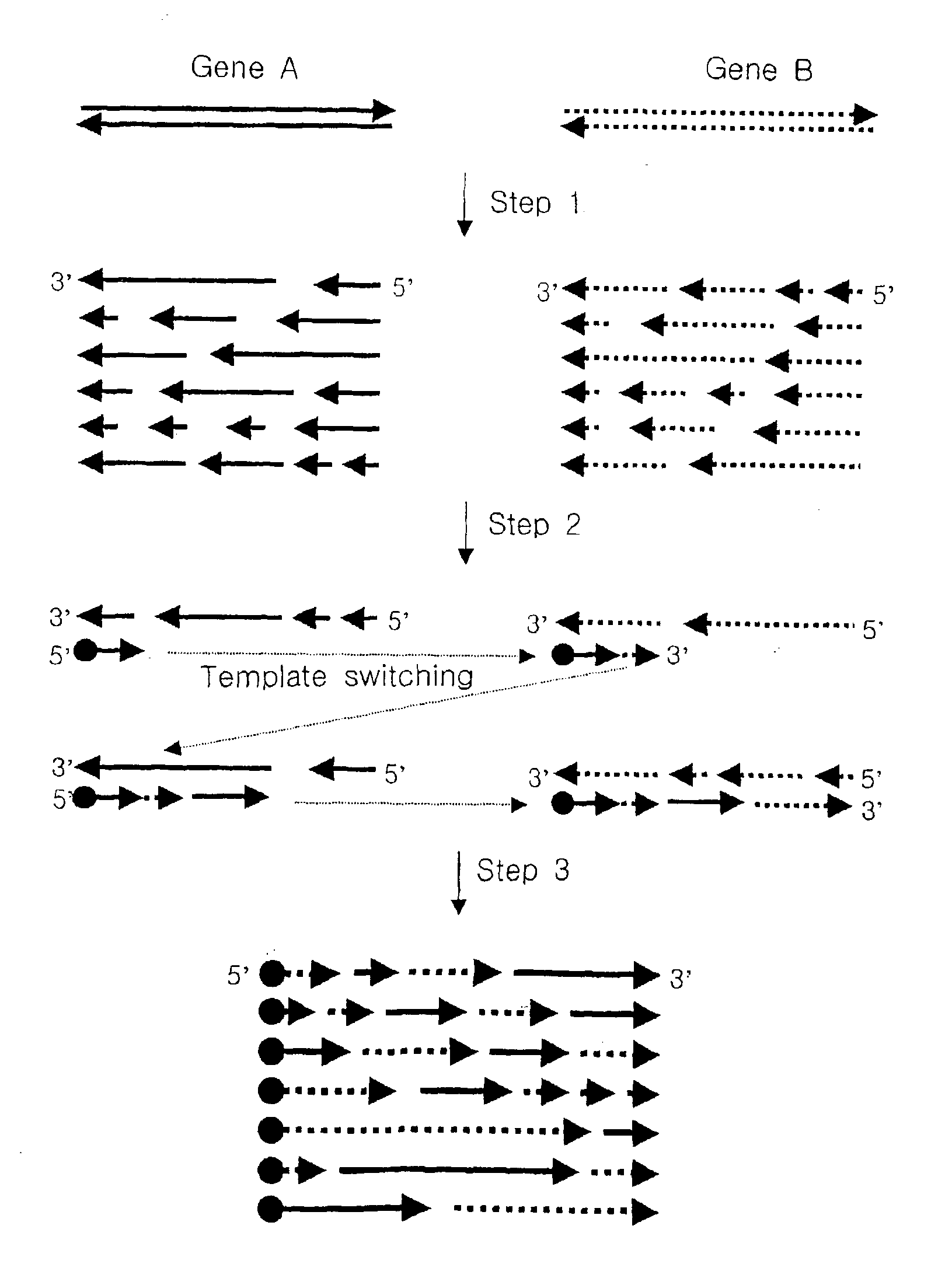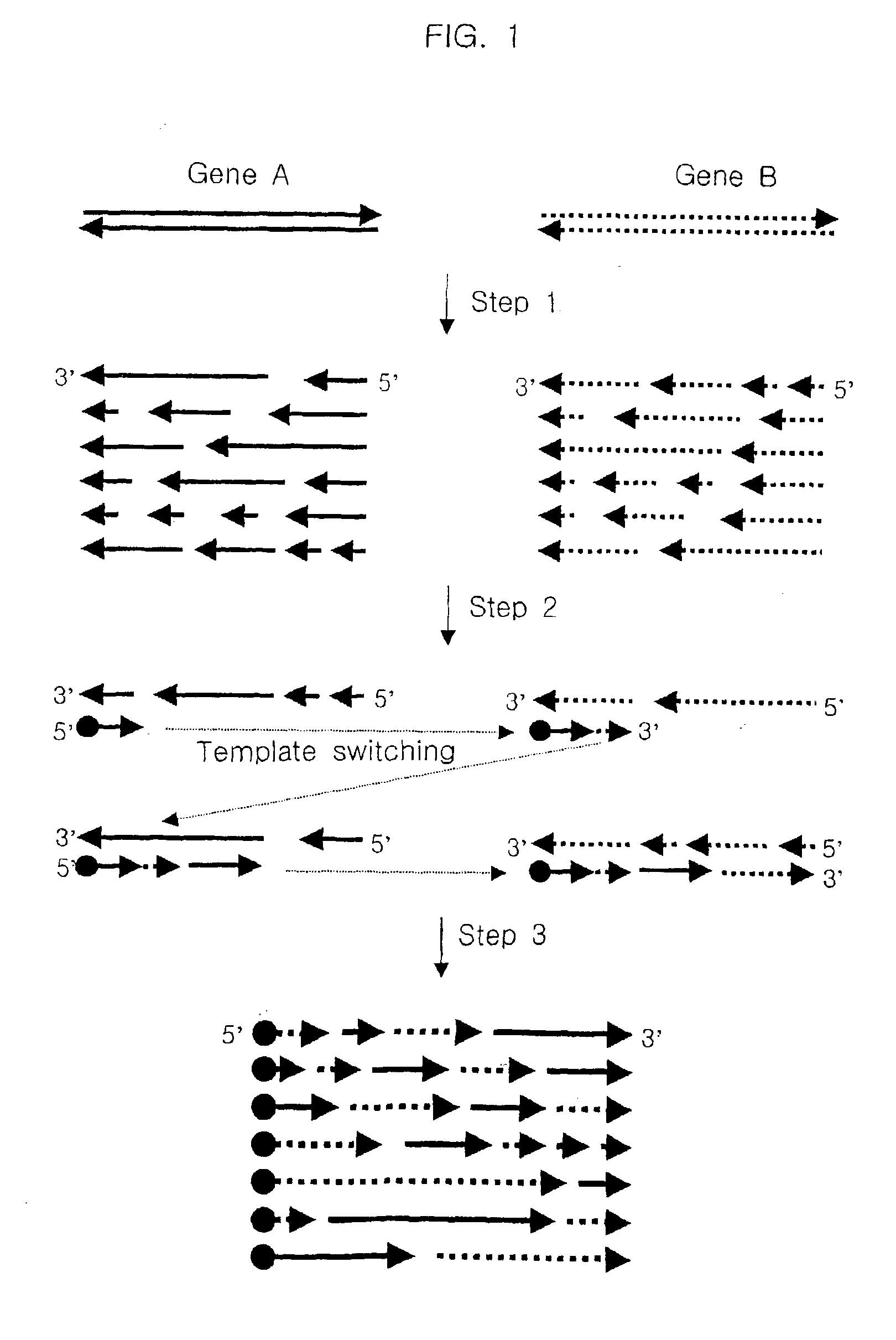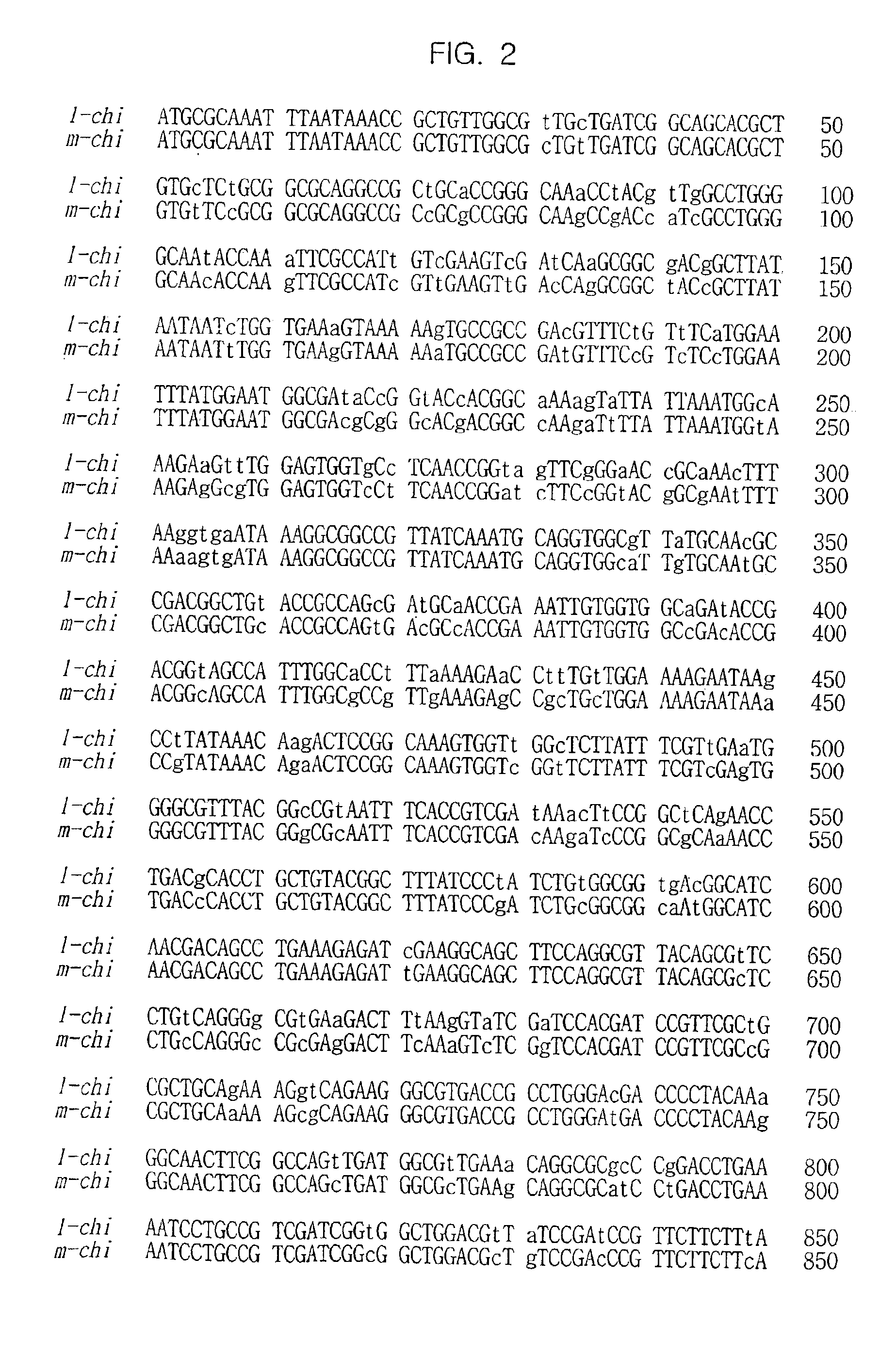Method for generating recombinant DNA library using unidirectional single-stranded DNA fragments
a dna fragment and recombinant technology, applied in the field of generating recombinant dna libraries using unidirectional single-stranded dna fragments, can solve the problem of limiting the practical application of the method for average-sized genes, taking a long time for this type of evolution to occur in the natural environment, and the frequency of co-occurrence of a plurality of mutations within a short-length region of dna is too
- Summary
- Abstract
- Description
- Claims
- Application Information
AI Technical Summary
Benefits of technology
Problems solved by technology
Method used
Image
Examples
example 1
Generating Unidirectional Single-stranded Polynucleotide Fragments
[0077]A pool of unidirectional single-stranded polynucleotide fragments having random length was prepared from a pair of double-stranded polynucleotides which have regions of similarity with each other as follows:
1-1) Preparation of Unidirectional Single-stranded DNA Fragments by Reverse Transcription
[0078]In an embodiment of the present invention, genes encoding chitinase of Serratia marcescens and Serratia liquefaciens (hereinafter, referred to as “m-chi” and “l-chi”, respectively) were chosen as starting polynucleotides to be reassembled, the nucleotide sequences of which are described in FIG. 2.
[0079]HindIII / Xba I fragments containing m-chi and l-chi genes, respectively, were cloned into pUC19, resulting in pUC19-m-chi and pUC19-l-chi. These plasmids were treated with Nde I, gap-filled with Klenow and then digested with HindIII. The resulting DNA inserts of about 2-kb were ligated to the HindIII / EcoRV backbone of ...
example 2
Reassembly of Polynucleotides by Polymerase Chain Reaction Using the Unidirectional Single-stranded DNA Fragment as a Template
[0089]The unidirectional single-stranded DNA fragments obtained above served as templates for polymerase chain reaction. A reaction mixture contained 20 ng of the single-stranded DNA fragments, 0.2 mM each dNTP, 2 MM MgCl2, 50 mM KCl, 10 mM Tris-HCl(pH 8.8), 0.1% Triton X-100, 2 units of Vent DNA polymerase (New England BioLabs) and 25 pmole of a primer in a total volume of 50 μl, wherein the primer being an oligonucleotide (SEQ ID NO: 24) having the nucleotide sequence identical to those at the 5′ termini of m-chi and l-chi genes. PCR was carried out on an MJ Research thermal cycler (PTC-100) at 94° C. for 3 min; 94° C. for 30 seconds, 55° C. for 30 seconds, 72° C. for 30 seconds(30 cycles); and 72° C., 5 min. For the amplification of a full-length DNA, secondary PCR was carried out on the above PCR products using 25 pmole of a 3′-specific oligonucleotide (S...
example 3
Sequencing and Screening
[0090]The PCR products of example 2 were extracted from the gel by a Geneclean kit(Bio 101), digested with HindIII and Xba I, and ligated to the HindIII / Xba I backbone of pBluescript II KS. The resulting recombinant plasmid was transformed to E. coli JM83 and transformants were selected on LB-agar plates supplemented with 100 μg / ml ampicillin. Plasmid DNA was isolated from the randomly chosen 14 colonies by Qiagen Spin Miniprep kit(Qiagen) and digested with restriction enzymes, Not I, Pst I and Hinc II.
[0091]FIG. 4 shows various sizes of DNA resolved by usual electrophoresis on 1% agarose gel. The band patterns of DNA fragments of l-chi gene cleaved with the same three restriction enzymes are shown in lane 5, those of m-chi gene in lanes 8 and 13. The remaining lanes represent patterns of random recombinant DNA reassembled from m-chi and l-chi genes, the patterns different from those of wild type DNA fragments. These results show that at least 11 clones of th...
PUM
| Property | Measurement | Unit |
|---|---|---|
| temperature | aaaaa | aaaaa |
| temperature | aaaaa | aaaaa |
| total volume | aaaaa | aaaaa |
Abstract
Description
Claims
Application Information
 Login to View More
Login to View More - R&D
- Intellectual Property
- Life Sciences
- Materials
- Tech Scout
- Unparalleled Data Quality
- Higher Quality Content
- 60% Fewer Hallucinations
Browse by: Latest US Patents, China's latest patents, Technical Efficacy Thesaurus, Application Domain, Technology Topic, Popular Technical Reports.
© 2025 PatSnap. All rights reserved.Legal|Privacy policy|Modern Slavery Act Transparency Statement|Sitemap|About US| Contact US: help@patsnap.com



